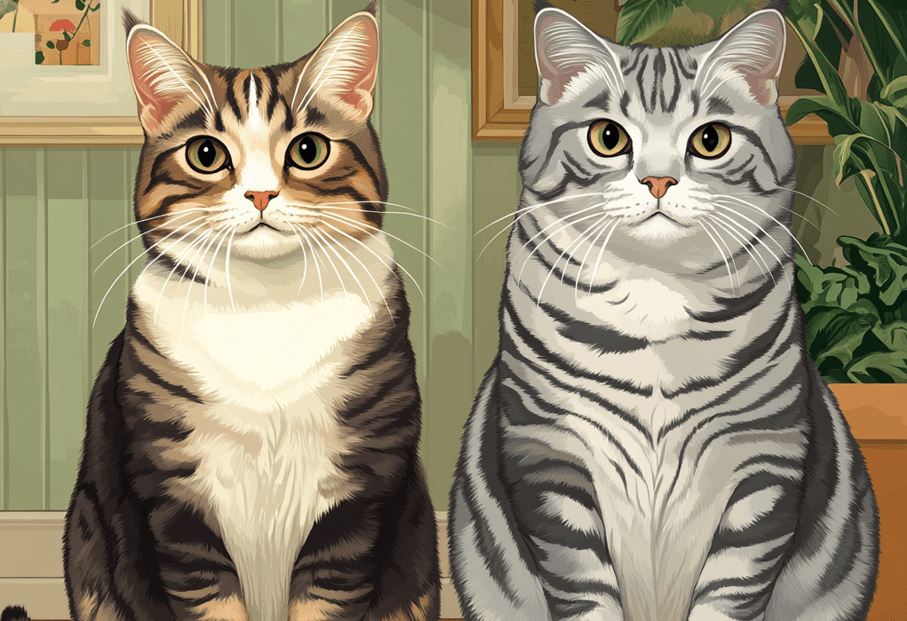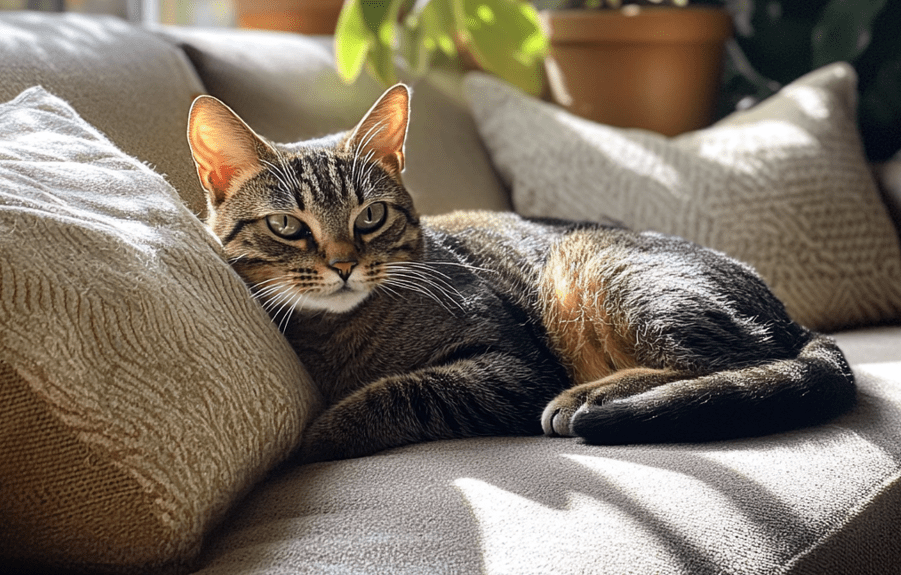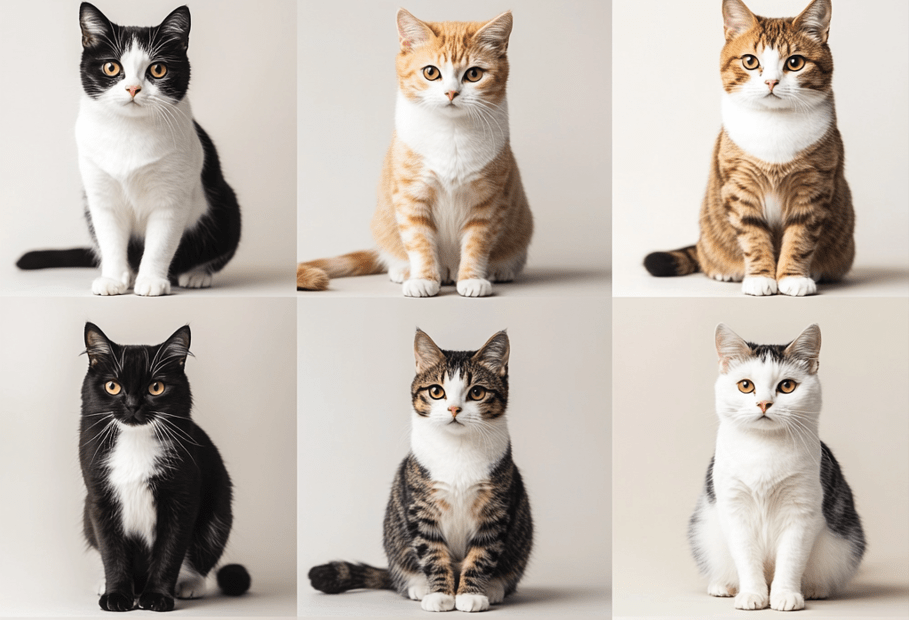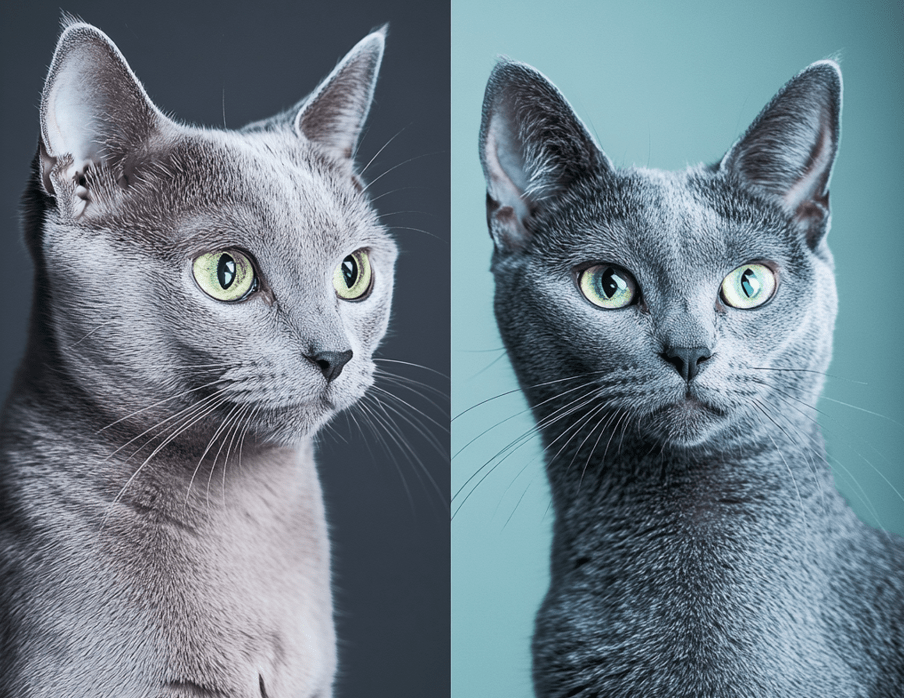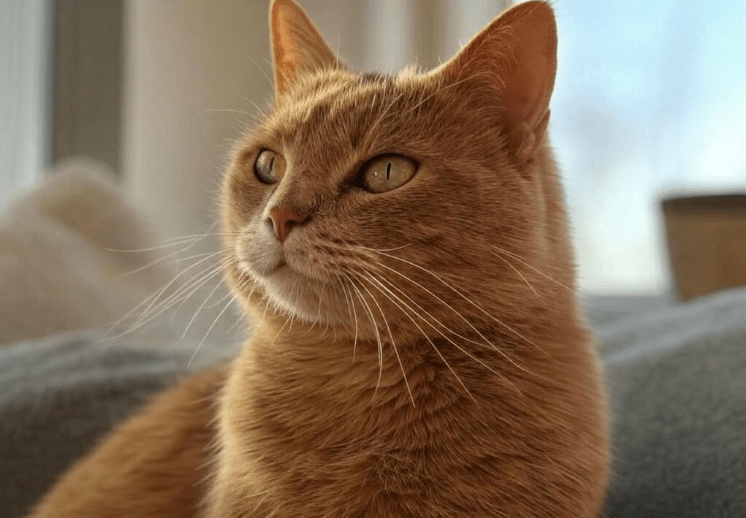
If you’ve ever noticed your Domestic Shorthair loves boxes, you’re not alone. These curious, playful cats are irresistibly drawn to cardboard boxes of all shapes and sizes. Whether it’s a tiny shoebox or a sprawling moving box, Domestic Shorthairs find them endlessly fascinating. This comprehensive guide explores why your Domestic Shorthair loves boxes, the science behind their obsession, and creative ways to use boxes to enrich their lives. Packed with practical tips and fun ideas, this article will help you turn simple cardboard into a playground for your feline friend.
Understanding the Domestic Shorthair
Domestic Shorthairs are a diverse group of mixed-breed cats known for their short, dense coats and wide range of personalities. From bold explorers to shy cuddlers, each Domestic Shorthair has a unique temperament. Their adaptability and curiosity make them particularly prone to quirky behaviors, like their love for boxes. Understanding this fascination can deepen your bond with your cat and provide opportunities for mental and physical stimulation.
Why Do Domestic Shorthairs Love Boxes?
The love for boxes is deeply rooted in feline instincts, and Domestic Shorthairs are no exception. Here are the key reasons behind this behavior:
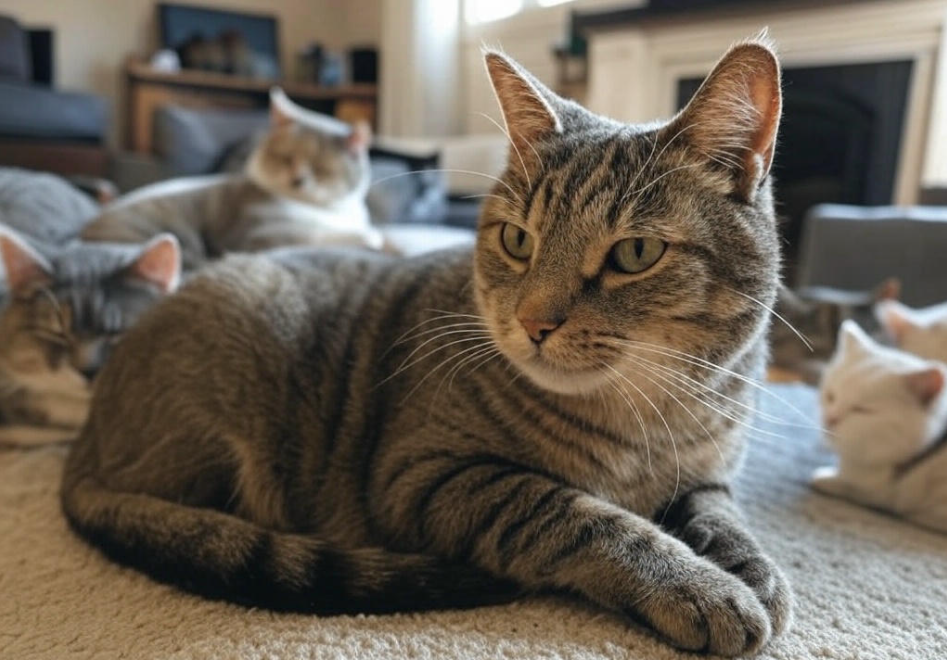
1. Instinctual Need for Security
Cats are both predators and prey in the wild, so they seek safe, enclosed spaces to hide from potential threats. A box provides a cozy, confined space where your Domestic Shorthair can feel secure. The walls of a box mimic a den, offering protection and a vantage point to observe their surroundings without being seen.
2. Stress Relief and Comfort
Boxes act as a stress-reliever for cats. Studies, like one from Utrecht University in 2015, show that cats provided with boxes in stressful environments, such as shelters, exhibit lower stress levels. The enclosed space helps your Domestic Shorthair feel calm and in control, especially during changes like moving or the arrival of new pets.
3. Temperature Regulation
Cardboard is an excellent insulator, helping your Domestic Shorthair stay warm. Boxes trap body heat, creating a snug environment that’s especially appealing in cooler climates or air-conditioned homes. You might notice your cat gravitating toward boxes during chilly months for this reason.
4. Play and Ambush Opportunities
Boxes fuel your Domestic Shorthair’s playful side. They’re perfect for pouncing, hiding, and ambushing imaginary prey—or even your toes! The texture of cardboard also invites scratching and chewing, satisfying natural instincts and keeping your cat entertained.
5. Curiosity and Exploration
Domestic Shorthairs are naturally curious, and a new box is an exciting mystery to unravel. The smell, texture, and novelty of a box stimulate their senses, encouraging exploration. Even an empty box can become a source of endless fascination.
The Science Behind the Box Obsession
Feline behaviorists and veterinarians have studied cats’ love for boxes, and the findings are fascinating. Cats, including Domestic Shorthairs, are territorial animals with a strong need for personal space. Boxes fulfill this need by providing a defined, controllable area. The enclosed nature of a box also triggers the “hiding instinct,” which is hardwired in cats to help them feel safe while stalking prey or avoiding danger.
Additionally, boxes engage a cat’s sensory system. The sound of rustling cardboard, the tactile experience of scratching, and the faint scent of the box (especially if it’s from a delivery) create a multi-sensory experience. This sensory enrichment is particularly important for indoor Domestic Shorthairs, who may lack the stimulation of outdoor environments.
How to Use Boxes for Fun and Enrichment
Now that you understand why your Domestic Shorthair loves boxes, let’s explore creative ways to use them to enhance their life. These ideas are budget-friendly, easy to implement, and tailored to your cat’s instincts.
1. Create a Box Haven
Set up a dedicated “box zone” in your home with multiple boxes of varying sizes. Stack them, cut holes for entrances and exits, or tape them together to form a tunnel system. Your Domestic Shorthair will love exploring this cardboard kingdom, which satisfies their need for hideouts and play.
Tip: Place a familiar blanket or toy inside one of the boxes to make it feel like home.
Safety Note: Remove staples, tape, or sharp edges to prevent injury.
2. Build a DIY Cat Condo
Transform boxes into a multi-level cat condo. Cut windows, doors, and peepholes, and stack boxes to create different levels. Add soft bedding or a scratching pad to make it cozy. This setup encourages climbing, jumping, and lounging, keeping your Domestic Shorthair active.
How-To: Use non-toxic glue or tape to secure boxes. Reinforce larger structures with extra cardboard for stability.
Bonus: Paint the condo with non-toxic, pet-safe paint for a fun aesthetic.
3. Make Interactive Puzzle Boxes
Stimulate your Domestic Shorthair’s problem-solving skills with puzzle boxes. Cut small holes in a box and place treats or toys inside. Your cat will work to retrieve the items, engaging their brain and body. Start with larger holes for beginners and gradually make them smaller for a challenge.
Tip: Use treats with a strong scent, like freeze-dried fish, to pique their interest.
Variation: Hide a ping-pong ball or feather toy inside for added fun.
4. Design a Box Fort
Create a sprawling box fort with interconnected tunnels and rooms. Use packing tape to join boxes and cut openings to form pathways. This fort appeals to your Domestic Shorthair’s love for exploration and ambush play. Add dangling toys or strings (securely attached) to encourage pouncing.
Safety Note: Supervise play to ensure your cat doesn’t chew or ingest strings.
Engagement Tip: Rotate the fort’s layout weekly to keep it fresh and exciting.
5. Incorporate Boxes into Playtime
Use boxes as props during interactive play. Hide behind a box and wiggle a feather wand to mimic prey, triggering your Domestic Shorthair’s hunting instincts. Alternatively, toss a ball into a box for them to chase. These activities strengthen your bond and provide physical exercise.
Toy Ideas: Try laser pointers, crinkle balls, or catnip-stuffed toys to enhance box play.
Play Tip: Vary the pace and direction of toys to keep your cat engaged.
6. Create a Cozy Nap Spot
Turn a box into a dedicated nap spot by lining it with a soft blanket or pet bed. Place it in a quiet corner of your home, away from high-traffic areas. Your Domestic Shorthair will appreciate having a warm, secure place to rest.
Comfort Tip: Add a piece of your clothing to the box to infuse it with your scent, which is comforting to your cat.
Location Tip: Elevate the box on a low shelf for cats who prefer high perches.
7. Use Boxes for Training
Boxes can be used to teach tricks or reinforce positive behaviors. For example, place a box on the floor and reward your Domestic Shorthair with treats when they jump inside. Over time, you can train them to associate the box with specific commands, like “sit” or “stay.”
Training Tip: Use clicker training to mark desired behaviors, followed by a treat.
Benefit: Training strengthens mental stimulation and builds trust.
Safety Considerations When Using Boxes
While boxes are generally safe, take these precautions to ensure your Domestic Shorthair’s well-being:
Remove Hazards: Check for staples, tape, or small parts that could be chewed or swallowed.
Supervise Play: Monitor your cat during box play to prevent them from getting stuck or injuring themselves.
Avoid Small Boxes: Ensure boxes are large enough to prevent your cat from becoming trapped.
Replace Damaged Boxes: Discard boxes that are torn or soggy, as they can harbor bacteria or collapse during play.
Use Non-Toxic Materials: If decorating boxes, use pet-safe paints, glues, or markers.
Tailoring Box Play to Your Domestic Shorthair’s Personality
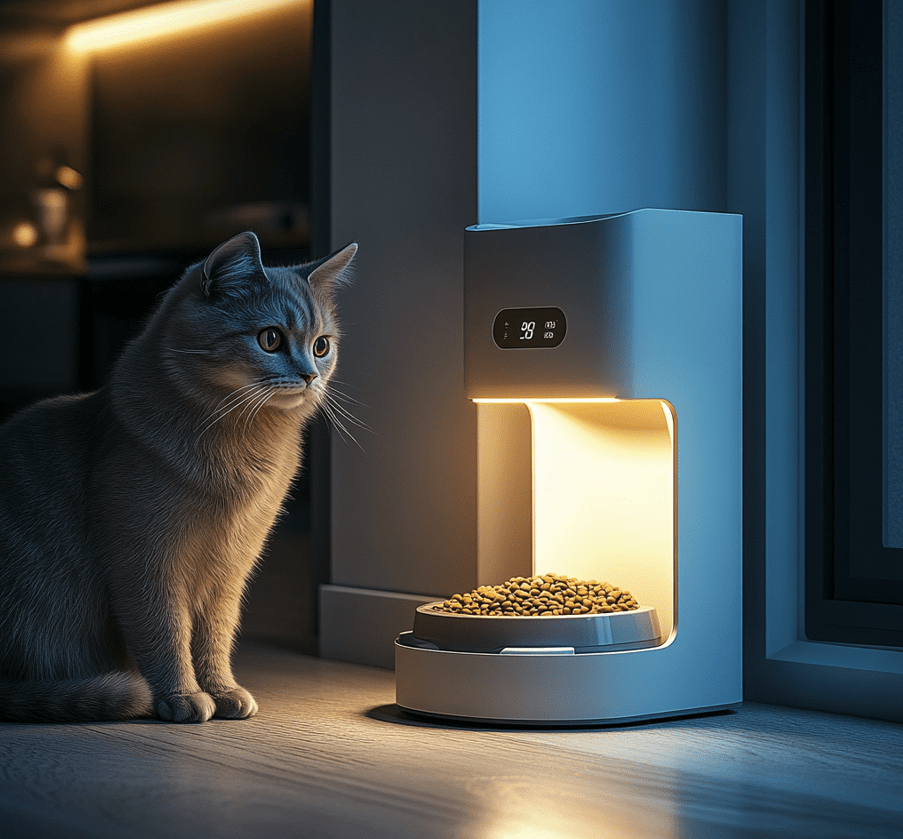
Every Domestic Shorthair is unique, so customize box activities based on their personality:
Bold and Playful Cats: These cats thrive on complex forts, tunnels, and interactive toys. Add bells or crinkle paper for extra stimulation.
Shy or Anxious Cats: Start with a single, cozy box in a quiet area. Gradually introduce more boxes as they gain confidence.
Senior Cats: Provide low, accessible boxes with soft bedding to accommodate mobility issues. Avoid high structures that require jumping.
Kittens: Use smaller boxes with large openings and lightweight toys to match their energy and size.
Benefits of Box Play for Domestic Shorthairs
Incorporating boxes into your Domestic Shorthair’s routine offers numerous benefits:
Mental Stimulation: Boxes engage problem-solving skills and curiosity, preventing boredom.
Physical Exercise: Jumping, pouncing, and climbing keep your cat active, reducing the risk of obesity.
Stress Reduction: Boxes provide a safe retreat, lowering anxiety in new or chaotic environments.
Cost-Effective Fun: Boxes are free or inexpensive, making them an accessible enrichment tool.
Strengthened Bond: Playing with your cat using boxes fosters trust and affection.
Creative Box Ideas from Cat Owners
Cat owners worldwide have shared innovative ways to use boxes for their Domestic Shorthairs. Here are some community-inspired ideas:
Box Maze: Connect several boxes with tunnels and holes to create a maze. Hide treats throughout to encourage exploration.
Cardboard Castle: Stack boxes into a castle shape with turrets and drawbridges. Cut out windows for your cat to “defend” their fortress.
Box Train: Tape small boxes together to form a train. Add cotton balls as “smoke” or string as a “pull cord” for whimsy.
Sensory Box: Fill a box with safe materials like crumpled paper, fabric scraps, or ping-pong balls for a tactile experience.
Where to Find Boxes
You likely have boxes at home from deliveries or purchases, but here are additional sources:
Online Retailers: Save boxes from Amazon, Chewy, or other deliveries.
Local Stores: Ask grocery stores, bookstores, or pet shops for spare boxes.
Recycling Centers: Check for clean, sturdy boxes at community recycling drop-offs.
Craft Stores: Purchase plain cardboard boxes for custom projects.
Always inspect boxes for cleanliness and remove any labels or adhesives before use.
Conclusion
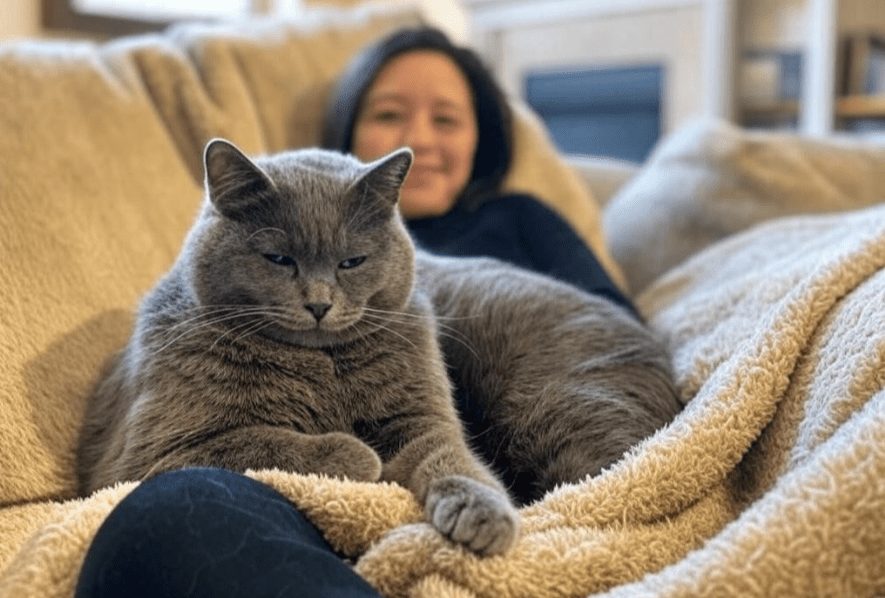
Your Domestic Shorthair’s love for boxes is more than a quirky habit—it’s a window into their instincts and needs. By understanding why Domestic Shorthairs love boxes and using them creatively, you can provide endless fun, mental stimulation, and comfort. From DIY condos to puzzle boxes, the possibilities are limited only by your imagination. Embrace the cardboard craze, and watch your Domestic Shorthair thrive in their box-filled world.
For more cat enrichment ideas or to explore pet-safe products, consult your veterinarian or trusted pet retailers. Your Domestic Shorthair’s joy is just a box away!

